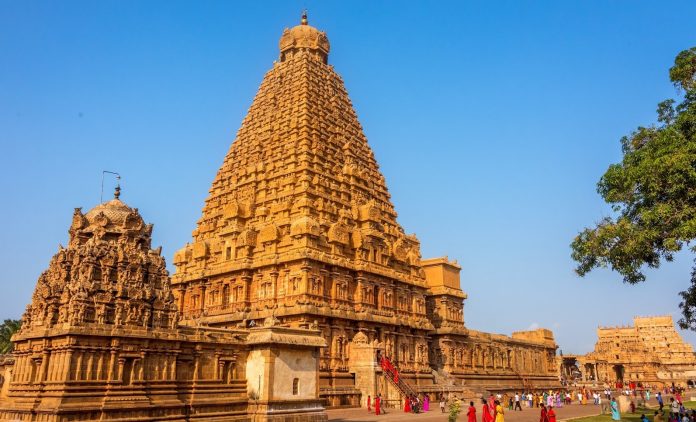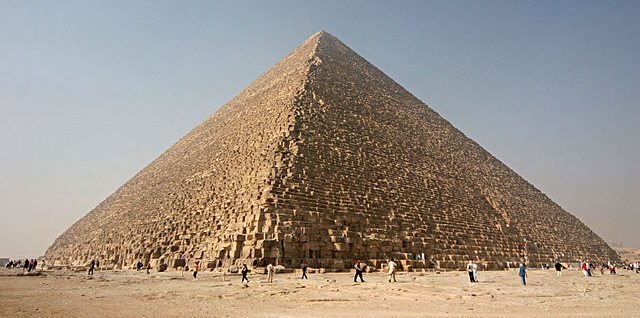A Pyramid Shaped Temple Tower

The traditional Indian architecture is extremely elementary and straightforward. The uncomplicated techniques of construction were utilized to build some of the glorious and magnificent buildings that accept withstood the examination of time. Structural elements like columns and beams were advisedly integrated inside the buildings to meet the needs of religious and cultural traditions. The vast liberty available to the sthapaka and sthapathi in the design of temples and other spiritual buildings resulted in the development of overwhelming wealth of architectural elements, diverseness of sculptural forms and decorative exuberances that has go the everlasting symbol of Indian Temple Architecture.
The shikhara remains the most outstanding element of the temple and the gateway is unremarkably modest. The prakaras or the walls surrounding the garbhagriha or sanctum sanctorumwere built around the whole complex and were oriented to the key directions. These enclosures had elaborate and magnificent gateways (gopurams) that led the devotees into the sacred courtyard.
A temple is the seat of divinity and is besides a sacred institution that aims at giving mental and physical solace to the devotee. The Garbhagriha or sanctum sanctorum encompasses the center or the nabhi of the superstructure. From the foursquare shape of the Garbhagriha to the finial (which is a point) is the shikhara. This curved form is identified in modern times as the pyramid. The shikhara usually refers to the superstructure of the sanctum sanctorum and is the near of import part of the temple. The pyramidal superstructure has a number of storeys. The shikhara tin be a square, circular, hexagonal (half-dozen sides) or octagonal (eight sides). The vertical growth of shikhara is also sometimes used to designate the whole superstructure of the temple.
The term shikhara is often mentioned at several places in the corking epics Ramayana and Mahabharata when referring to the prasad or temple. While the shikhara more often than not refers to the curvilinear vertical growth of the sanctum sanctorum, the gopurams or gate towers refer to the gateways to the various enclosures and a temple. These are besides pyramid shaped and the cross-department is reduced as they get up.
Generally the pyramidal superstructure has four or eight triangles joined if the garbhagriha was square (or rectangular) and round shaped if the sanctum sanctorum was round. The superstructure was solid or hollow. The shikhara by and large comprises of iii parts:
- The recessed storeys
- Enclosure surrounding each storey.
- The dome (stupi or kalasa) rising above the terminal storey (besides chosen
the Vimana or Harmya)
In sure temples the shikhara is formed by placing a apartment roof on four pillars. Some other slab is placed over the shikhara. Slab upon slab diminishing in size as they become up are placed one above the other, topped by a perforated ring stone, known as the amalaka, forming a step pyramid. The added weight of the slabs keeps the roof in position. Many a time an upper chamber for the shrine was introduced for greatly reducing mass and weight.
The surrounding walls around the sanctum sanctorum, which have gateways or
gopurams, also take pyramid shaped roofs with diminishing tiers equally they become upwards, with the outermost enclosure referred as mahamayada. The firsthand enclosure around the garbhagriha, known every bit the Prasada towers above it like a pyramid with diminishing tiers and is as well known as the shikhara.
The celestial power drawn through the shikharas gives the deity effulgence and metaphysical power. The shikhara apart from being a roof for the sanctum sanctorum is also a symbol of divine sanctity giving meaning accent to the garbhagriha and the main deity of the central divinity. The meridian of the shikhara tapers to a finial and is known as the kalasa or stupika. One of the learned writers on Temple architecture says that the peak of each storey of the pyramidal superstructure diminishes in arithmetical progression, being ane-quaternary or one-third less than the lower storey, the ground floor not beingness included.
Pyramids
The term pyramid is derived from the Greek words pyra meaning burn down, lite, or visible, and the word midos meaning measures. Information technology is also translated to mean fire at the center. This word perhaps denotes the peachy hidden power of these structures with a square base and four triangular sides that rise upwards to a finial.

Egypt is a country of pyramids and we have Egyptologists and pyramidologists doing research and throwing lite on the antiquity and mystery surrounding them. Even though Egypt is synonymous with pyramids, we discover them in other parts of the world such as China, Mexico, Spain, France, Siberia, Cardinal America, Hellenic republic, Cambodia and other countries.
The pyramids of Egypt are traced to at least 4000 years dorsum. The Giza pyramids of Egypt date dorsum to about 2500 B.C. A remarkable feature of the Giza pyramids is that they are aligned with great precision to the cardinal directions.
In recent times these structures with four triangular sides standing over a foursquare base have entered the domain of Vastu and are being prescribed for many of the imbalances of a edifice – residential or business.
Vastu texts consider the proper orientation to the fundamental directions equally of great significance while referring to the Yoni aspect of the Ayadi Shadvargas (building formulae). Ayadi is a grouping of half-dozen formulae Aya, Vyaya, Yoni, Rksha, Vara and Tithi that are used to determine the dimensional conformance of a building.
At that place are many similarities betwixt the Hindu shikharas and the Egyptian pyramids. We take referred to Step pyramids. In fact, they are like to the shikharas with the diminishing storeys that is considered in Vastu Shastra. While the shikharas drew the cosmic energies into the garbagriha to overflowing the sanctum sanctorum with divinity, the pyramids drew the cosmic energies to preserve the bodies of the Pharoah Kings who were considered divine. In the villages of Republic of india, we even find huts that have tops in the shape of pyramids. It is interesting to note that while pyramids are said to proceed foodstuff fresh, the prasadams and other offerings in the garbhagriha or sanctum sanctorum of a temple as well remain fresh for a long fourth dimension.
Whether you phone call it a shikhara or pyramid, it is a fact that the shape of these structures influences the flow of free energy from the universe and this energy helps in enhancing the overall quality of our life. The about important affair to recognize is that many of their architectural and structure features are similar to that used in Indian temples built thousands of years ago.
A Pyramid Shaped Temple Tower,
Source: http://www.mysteryofindia.com/2015/10/vastu-temples-and-pyramids.html
Posted by: pattersonkeiand.blogspot.com


0 Response to "A Pyramid Shaped Temple Tower"
Post a Comment